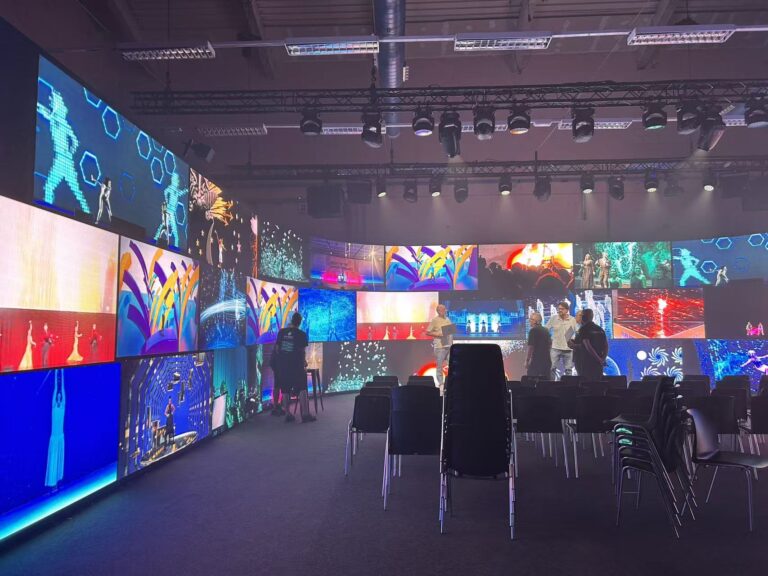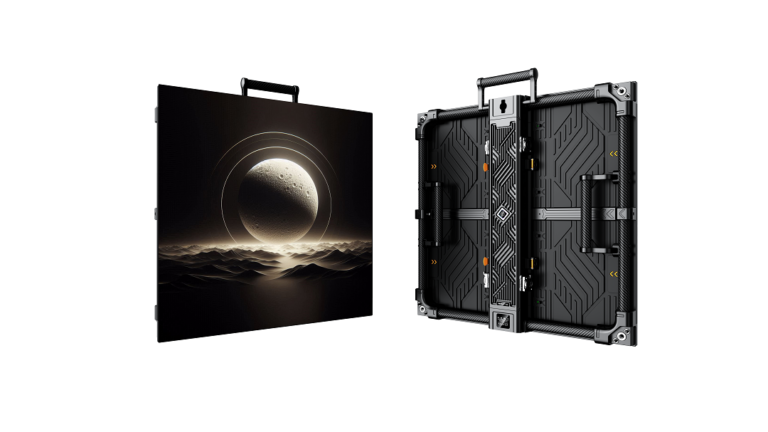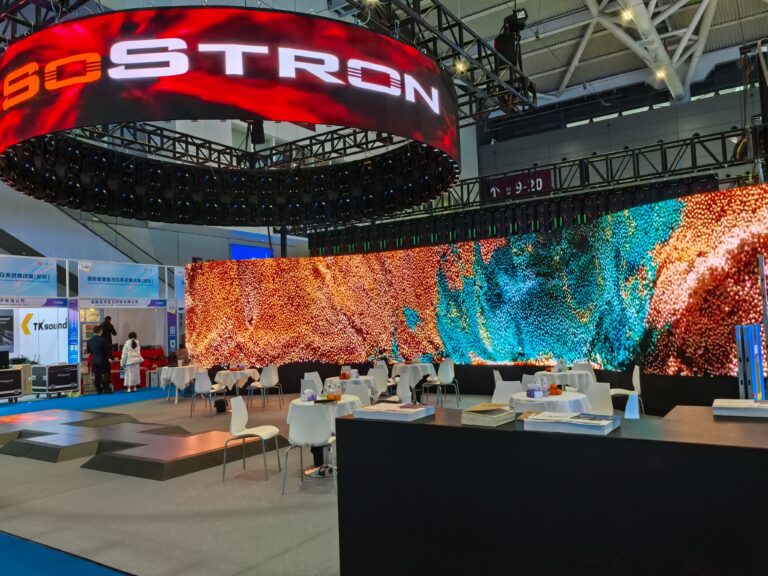Flexible led screen definition
Flexible led display is also called led soft screen, which is made of led soft module. led soft module is a kind of led display screen, which adopts flexible circuit board design. The flexible LED display screen is mainly composed of a special flexible material PCB and LED chip. It has a large bending range and is often used to make LED displays of various shapes.
What are the characteristics of flexible led screen?
1. Soft module, unique model selection and convenient installation;
2. The mask is made of silicone resin, flat and without color difference;
3. It is flexible and can be made into any shape as required;
4. When the cylinder shape is formed, the image is smooth and beautiful. The signal line and power line between the boxes adopt fast connectors, which are easy to install and can be used with professional audio and video processing systems;
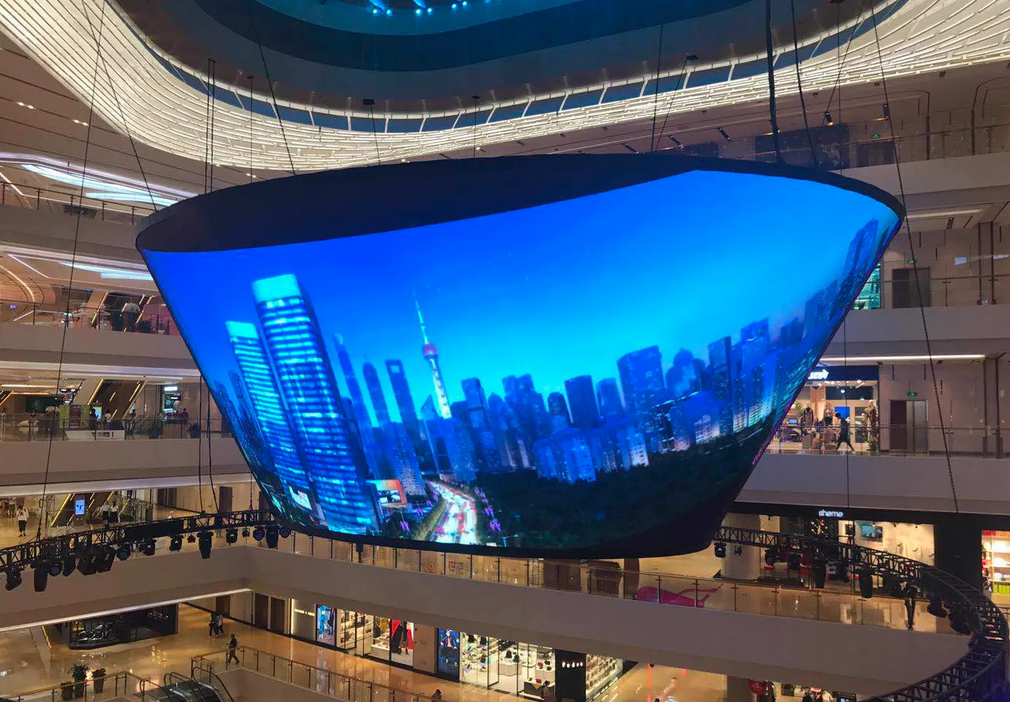
Why is flexible LED screen so popular?
Energy saving and low power consumption
The power consumption of flexible LED display screen is generally not very high, especially the flexible LED display screen manufactured by Ruiling Optoelectronics, which uses dynamic hierarchical power supply and high-speed variable current ash algorithm, and the average power consumption is only 60W/m ² About, the power consumption is extremely low, energy saving and power saving, especially for large display screens, which can save a lot of electricity costs every year.
Free to bend
The flexible LED display screen has strong flexibility and can be bent at will, making it more widely used. The flexible screen can not only be used in the fields of conventional screen applications, but also be installed in the fields of specific shapes. Its application is more flexible.
Various installation methods
The flexible screen has a variety of installation methods, mainly because it is flexible and easy to bend. For example, it has floor mounted, suspended mounted, embedded mounted, suspended screen, etc.

Where is the flexible LED screen used?
Large hotels
It has the effect of hotel decoration, and can be used for advertisement display, LED super large clock screen, LED screen, etc. The hotel can also introduce products and services with its own characteristics to attract more customers; You can put the world watch on the led mailbox screen. The clock can display the global exchange rate in an all-round, accurate and comprehensive way to facilitate international friends to query the exchange rate of the day.
Large commercial supermarket
Generally, large shopping malls have large building bearing beams, which are monotonous, occupy space and waste space. In these aspects, the LED cylinder screen not only solves the late effects, but also achieves a variety of commercial promotion purposes such as discount promotion, discount promotion, and new product sales.
Places of entertainment
Entertainment places pay more attention to the coordination of sound, light and shadow effects. LED flexible screen can be made into LED strip screen, wave shaped LED screen, sector shaped LED screen, mobile LED tile screen and other products according to the shape. While making full use of the site, the combination of sound, light and shadow will present a stronger effect.
Flexible led screen technology
The flexible LED display module can be bent freely without damage to itself. Its circuit board is made of a special flexible material and will not break due to bending. The flexible LED display module can be spliced into arc, cylindrical, curved and other displays according to the actual situation on site. It is a technical improvement with outstanding characteristics and display progress.
How do you choose it to drive your business?
1. Consider the position of the flexible LED screen.
If the LED screen is used for outdoor applications, the brightness, durability and display resolution of the LED screen need to be considered. Brightness is one of the significant differences between indoor and outdoor LED displays. The brightness of the outdoor display screen is several times that of the indoor LED display screen, because the images on the LED display screen are illegible or not bright due to the strong sunlight. Therefore, in order to provide ultra-high illumination, flexible LED displays for outdoor use must have multiple bright LEDs in a single pixel. In addition, the outdoor LED screen must be leak proof, waterproof and heat-resistant, especially the outdoor performance stage and the glass exterior wall. The waterproof grade of outdoor LED display is required to be IP65, while the indoor display is only IP20. Not only that, viewers usually view outdoor LED screens from a longer distance, so the resolution is low, which is different from indoor LED screens, because the distance between viewers and screens is short, so high resolution is required. The pixel spacing defines the pixel density on the LED display. Outdoor flexible LED displays have large pixel spacing and low resolution, while indoor displays that require high resolution for close viewing have small pixel spacing.
2. Consider your business style.
Only by conveying images and functions similar to your business style can you leave a lasting impression in the minds of the audience. So before choosing a flexible LED screen, you should evaluate your business style and what effect you want to achieve with the flexible LED screen. The irregular flexible LED screen hanging on the ceiling is full of personality, which is very suitable for outdoor stage, concert and other entertainment places. On the other hand, the conventional long flexible LED screen is very suitable for shopping malls to display product information on shelves.
3. Select reliable LED screen manufacturers.
The LED display industry is relatively mature, and thousands of LED display manufacturers have emerged in the market. The selection of reliable LED manufacturers is conducive to your subsequent business support and the price of flexible LED screens, because reliable LED screen manufacturers will strictly control product quality, devote themselves to technological innovation, and provide more comprehensive solutions for the display technology industry. Like Sostron, he has been deeply involved in the display technology industry for more than ten years and mastered professional display technology.
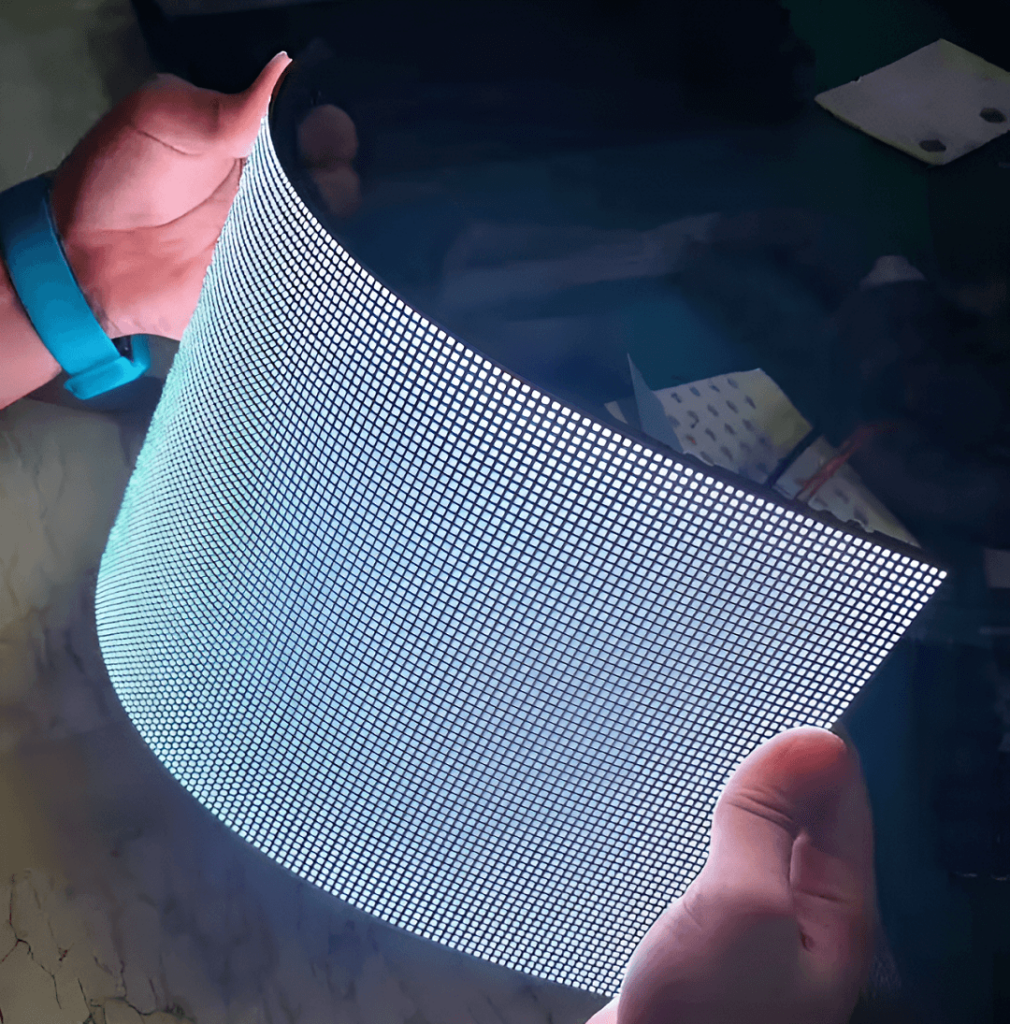
How to Repair Flexible LED Modules
Repairing flexible LED display modules requires careful handling due to their thin film structure, which is more fragile than traditional hard screens. Here are the general steps for servicing flexible LED display modules:
- Power Off: Ensure the power to the flexible LED display is completely turned off to prevent electrical hazards and damage to electronic components during repair.
- Diagnose the Issue: Carefully inspect the flexible LED display module to identify the faulty or damaged part. Visual inspection and testing help confirm the faults.
- Cease Usage: Once a problem is identified, stop using the flexible LED screen module immediately to prevent further damage.
- Cleaning: Use tools such as a soft brush or air gun to gently remove dust and dirt. Take care not to damage the flexible film during cleaning.
- Replace Faulty Module: If the flexible LED module has bad spots or damage, replace the faulty module with the same model and specifications to maintain consistent display quality.
- Welding and Connection: Experienced technicians may need to perform welding and connection operations. Ensure proper connection to avoid damage to wires or circuits.
- Testing and Commissioning: After maintenance, conduct comprehensive testing to ensure all functions of the flexible LED screen work properly.
Proper maintenance and repair ensure the longevity and performance of your flexible LED display. If you’re unsure or need assistance, it’s advisable to consult experienced professionals.
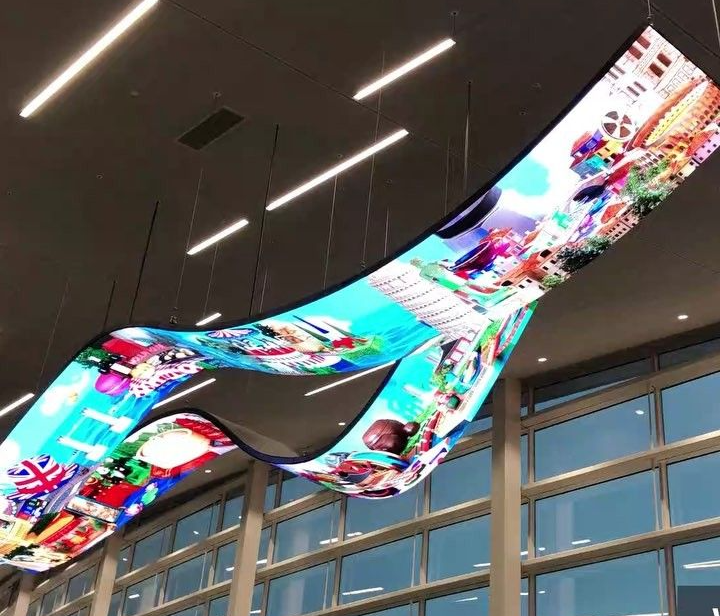
Model Specifications of Flexible LED Screens
Specifications for flexible LED displays can vary depending on the manufacturer and product line. Here are some common model specifications, though please note that these may evolve over time:
- Pixel Pitch: Pixel pitch is typically measured in millimeters (e.g., P1.875, P2, P3, P4). Smaller pixel pitch indicates higher resolution and closer viewing distance.
- Resolution: The number of horizontal and vertical pixels determining image clarity and detail performance.
- Size: Flexible LED screens are customizable in size, ranging from a few square meters to dozens of square meters to suit specific needs.
- Brightness: Measured in nits, higher brightness ensures better visibility outdoors or in high-light conditions.
- Gray Level: Determines color depth and image details, usually measured in bit units (e.g., 8 bits, 10 bits).
- Viewing Angle: Indicates the audience’s ability to view the image from different angles. Common viewing angle is about 160 degrees horizontal and vertical.
- Refresh Rate: Number of times the display refreshes the image per second, higher refresh rate provides smoother video display.
- Flexible Performance: Different products offer varying degrees of flexibility, some can bend, fold, and adapt to different surfaces and shapes.
- Protection Level: Flexible LED screens may have different protection levels (e.g., water and dust resistance) for indoor and outdoor applications.
These specifications play a crucial role in determining the suitability of a flexible LED screen for specific applications. For the latest specifications and tailored recommendations, feel free to consult us directly.

Types of LED Flexible Screens
LED flexible screens are versatile displays capable of bending, folding, and adapting to various shapes according to requirements. Based on flexibility and application scenarios, LED flexible displays can be categorized into the following types:
1. Flexible LED Strip:
A thin and soft LED strip suitable for indoor and outdoor decoration, lighting, and advertising. Its flexibility allows it to bend and adhere to different surfaces like walls, stairs, furniture, etc.
2. Flexible LED Screen Module:
A flexible and foldable display based on LED display modules. These modules can be combined in specific configurations to create various shapes such as curved, cylindrical, etc. Ideal for applications in shopping malls, exhibitions, stages, and more.
3. Flexible LED Screen Reel:
This type of LED screen can shrink and unfold like a scroll, offering portability and ease of use. Commonly used in mobile advertising, outdoor activities, concerts, and events, providing a convenient and quick setup for display screens.
These types cater to diverse needs and environments, offering flexibility and creativity in visual displays.
Can flexible LED screen be customized?
Experience the power of customization with our flexible LED screens!
In recent years, there has been a growing trend among companies towards customized LED display solutions. Alongside traditional displays, uniquely shaped flexible screens are gaining popularity.
Customization offers numerous advantages, including:
- Tailored Solutions: Better meeting individual needs and preferences.
- Enhanced Quality: Improving product sophistication and personalization.
- Avoiding Overproduction: Minimizing waste and optimizing resources.
This shift in LED display manufacturing is driving the advancement of intelligent flexible displays in the industry. Here are three common types:
This trend enables users to opt for personalized customization, providing access to high-end solutions. Customized production models are becoming increasingly prevalent in the market.
Customers are no longer passive recipients of off-the-shelf products; they actively engage in the design, development, and production processes, demanding more personalized solutions to meet their specific requirements.
With the continuous maturity of flexible screen technology, more flexible folding products can be seen on the market in the future. However, the current folding screen cannot bend freely like paper. People urgently need to find flexible alternative materials to meet the development needs of flexible display. Most LED column screens in large shopping centers and special-shaped LED displays in entertainment places are flexible LED displays. The development of flexible screen is very important for promoting the R&D capability of manufacturers. Only by meeting the market segmentation needs, expanding their living space and improving the innovation capability of products, can enterprises get rid of market competition and survive better in the market.


